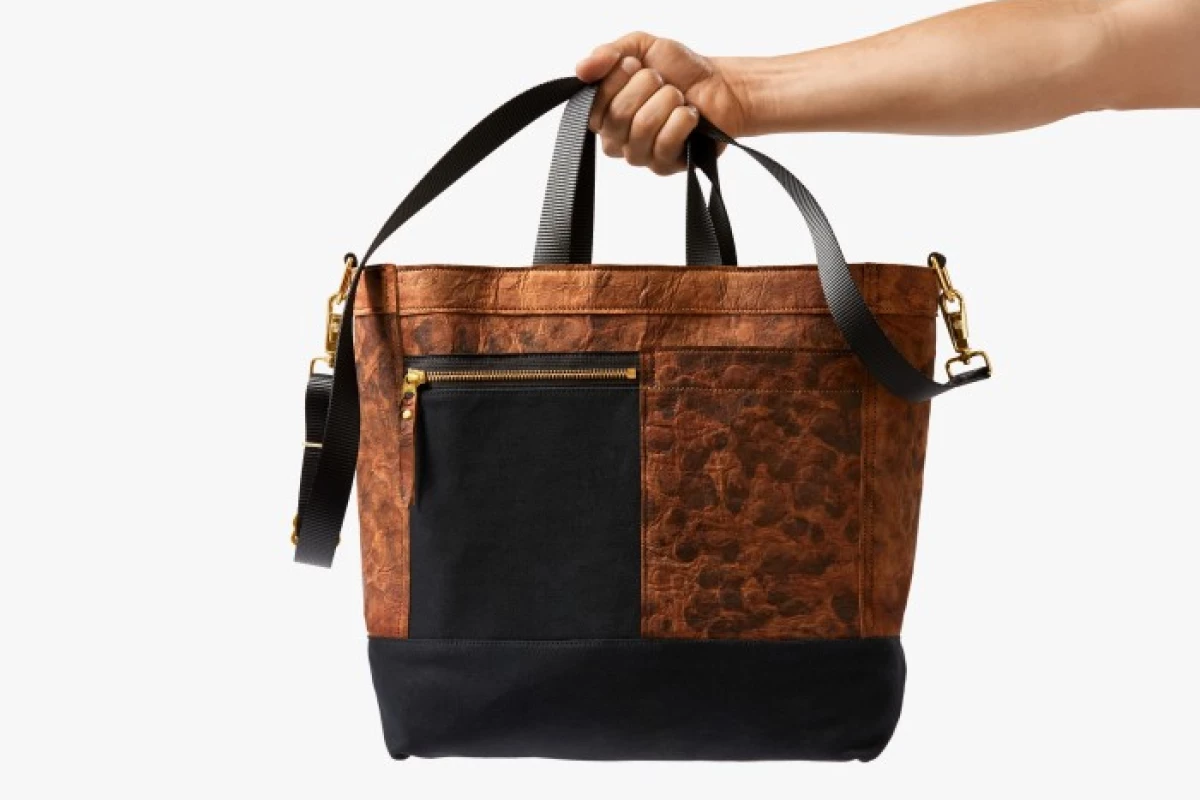A new review article, from an international team of material scientists, is suggesting a leather-like material made from mushroom-derived biomass has the potential to be cheaper and more environmentally sustainable than animal leather or its plastic derivations.
For thousands of years humans have produced leather from animals. More recently, alongside growing ethical concerns regarding mass livestock farming, the environmental cost of leather production has become a serious issue. On top of the environmental damage from raising livestock, the act of processing leather requires large volumes of hazardous chemicals.
Alternative, non-animal derived forms of leather have traditionally been embraced by sustainability advocates. While these types of “vegan textiles” sidestep many issues found when producing traditional leather, these synthetic materials have their own host of dilemmas. As well as relying on toxic chemicals for production, synthetic leathers come up against the same non-biodegradable problems faced by most plastic products.
“We tend to think of synthetic leather, sometimes known as ‘vegan leather’, as being better for the environment,” says Alexander Bismarck, from the University of Vienna and co-author on the new review article. “However, traditional leather might be ethically questionable, and both leather and plastic substitutes have issues with environmental sustainability.”
The idea of fungi biomass being used as a base for the production of materials and textiles is not new. Back in the 1950s papermakers discovered a polymer called chitin, found in the cell walls of fungi, could be used to produce writing paper. More recently these fungi-derived compounds have been used to create everything from building materials to fashionable textiles.

Fungi-derived leather is a relatively new innovation. As fans of mycology know, the little mushrooms that we see pop out of the ground are only a small part of any given fungus. Under the ground is an often sprawling web of branching, threaded growths known collectively as the mycelium. It is from this mycelium structure that leather can be produced.
In their new review article, published in the journal Nature Sustainability, Bismarck and colleagues suggest advances in manufacturing processes have resulted in fungi-derived leather being able to now meet the “functional and aesthetic expectations of consumers.” The article argues fungi-derived leather overcomes the ethical issues facing animal leather and the environmental issues facing synthetic leathers.
“In addition to being more environmentally sustainable to produce than leather and its synthetic alternatives, as they do not rely on livestock farming or the use of fossil resources, pure fungi-biomass-based leather substitutes are also biodegradable at the end of their service life and cheap to manufacture,” the researchers write.

Scaling the production of fungi leather up to industrial levels is perhaps one of the remaining hurdles facing this nascent industry. But this may not be a problem for too much longer. Just last year a team from Finland revealed the development of what they claimed was a novel industrial process that can scale up production of fungi leather.
Bismarck and his colleagues believe fungi-derived leather alternatives are set to play a major role in future fabric markets. It is sustainable, cheap, ethical, biodegradable and environmentally friendly, Bismarck says.
“Substantial advances in fungi-based leathers and the growing number of companies that are producing them suggests that this new material will play a considerable role in the future of ethically and environmentally responsible fabrics,” adds Bismarck.
The new review article was published in the journal Nature Sustainability.
Source: Imperial College London






